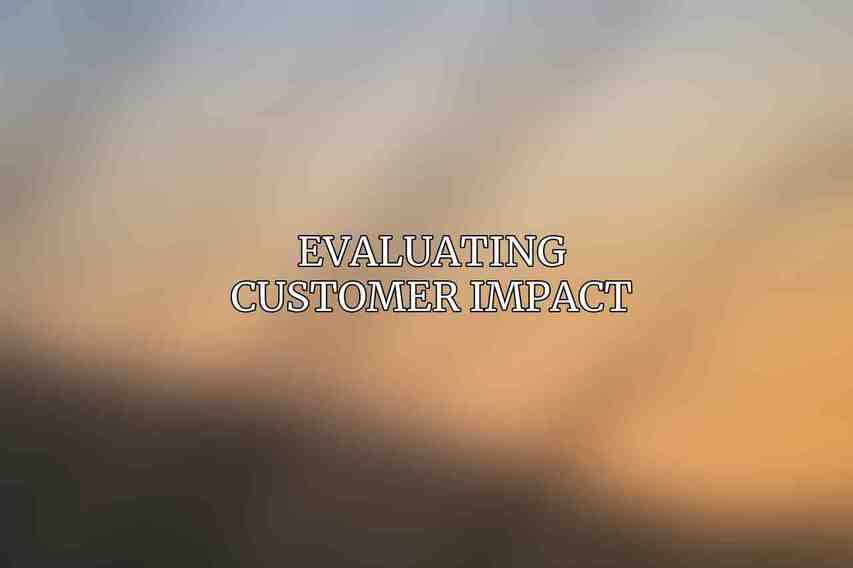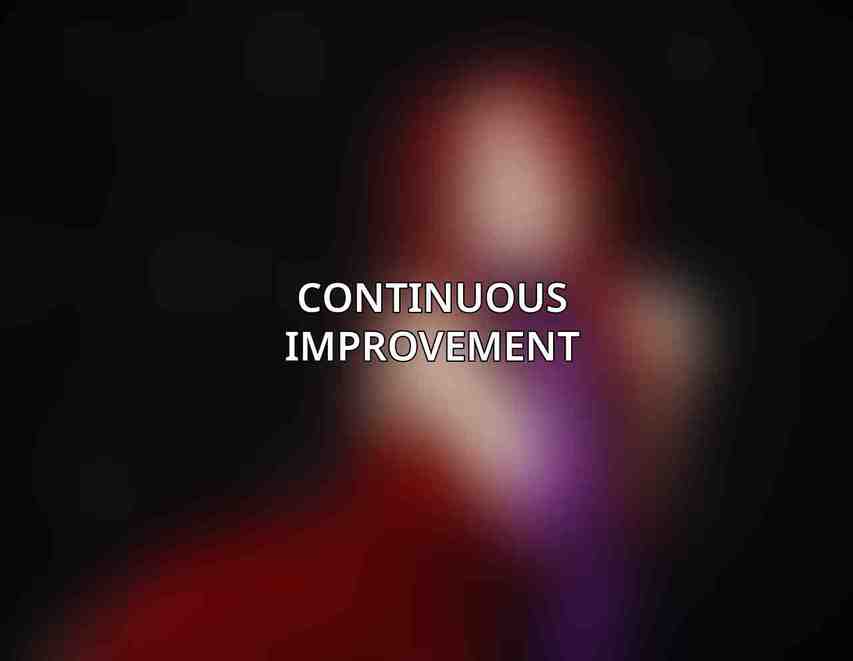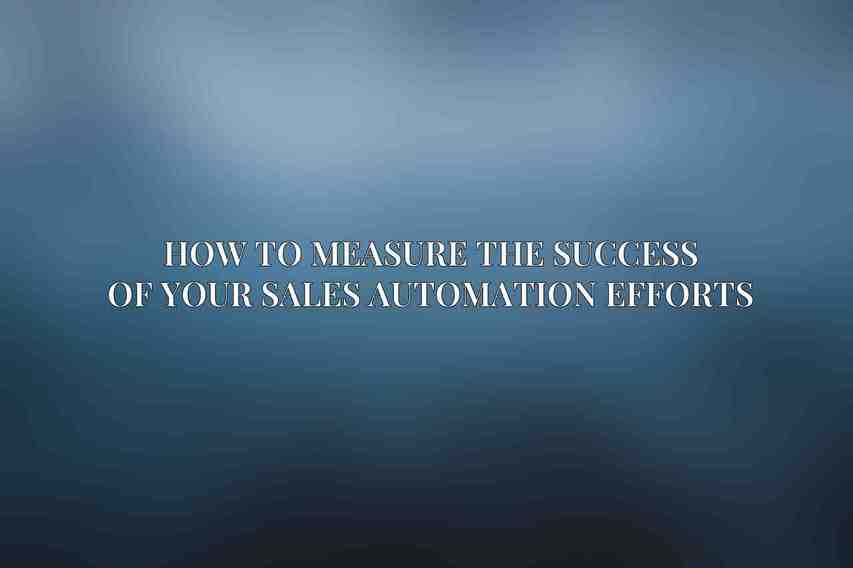it’s essential to establish clear goals and objectives that align with the overall business strategy. These goals serve as the foundation for measuring the success of your automation efforts. By clearly defining what you aim to achieve through automation, whether it’s increasing sales efficiency, improving customer retention, or boosting revenue, you can track progress effectively.
Identifying Key Performance Indicators (KPIs) is crucial in assessing the impact of sales automation on your business. These KPIs should be directly tied to your goals and provide measurable insights into the effectiveness of your automation processes. Whether it’s tracking conversion rates, sales cycle length, or customer satisfaction levels, selecting the right KPIs ensures that you focus on the metrics that matter most to your business.
Quantifying and tracking KPIs is a fundamental step in measuring the success of your sales automation efforts. Utilizing tools and software that allow for real-time tracking of KPIs enables you to monitor performance continuously. By analyzing data trends and deviations from expected outcomes, you can proactively address any issues and optimize your automation strategies for better results.
Setting benchmarks for improvement is a valuable practice in evaluating the success of your sales automation initiatives. By establishing baseline metrics and goals for improvement, you can track progress over time and gauge the effectiveness of your automation efforts. Benchmarking also allows you to compare your performance against industry standards and identify areas where further enhancements are needed.
Measuring Efficiency and Productivity
A. Sales Cycle Length Reduction
Reducing the length of the sales cycle is a key indicator of improved efficiency and productivity in sales automation. Tracking metrics such as the average time to close a deal and the number of sales stages involved can provide valuable insights into the effectiveness of your automation processes. By streamlining the sales cycle, you can enhance the overall sales process and accelerate revenue generation.
B. Lead Conversion Rate
The lead conversion rate is a critical metric that measures the percentage of leads that are successfully converted into customers. By analyzing lead quality metrics and assessing the factors that influence conversion rates, you can optimize your automation strategies to improve lead conversion. Understanding which leads are most likely to convert and tailoring your approach accordingly can significantly impact your sales performance.
C. Average Sales per Representative
Measuring the average sales volume per sales representative helps evaluate individual performance and overall sales team productivity. Tracking total sales volume per rep, as well as quota attainment and overachievement, provides insights into the efficiency of your sales team. By leveraging automation tools to empower sales representatives and enhance their productivity, you can boost sales performance and drive revenue growth.
Evaluating Customer Impact

A. Customer Satisfaction
Customer satisfaction is a key indicator of the success of your sales automation efforts. Conducting customer surveys, collecting feedback ratings, and monitoring Net Promoter Score (NPS) can help gauge customer sentiment and loyalty. By prioritizing customer satisfaction and leveraging automation to personalize interactions and improve service quality, you can strengthen customer relationships and drive long-term business success.
B. Customer Retention
Customer retention rates reflect the ability of your automation strategies to engage and retain existing customers. Monitoring customer churn rate and average customer lifetime value provides insights into customer loyalty and recurring revenue streams. By implementing targeted retention strategies and leveraging automation to deliver personalized experiences, you can enhance customer retention and maximize lifetime customer value.
C. Cross-Selling and Upselling Opportunities
Identifying cross-selling and upselling opportunities through automation can drive incremental revenue growth and maximize customer value. Tracking metrics such as the number of additional products or services sold and average order value can help capitalize on existing customer relationships. By leveraging automation to suggest relevant products or services based on customer behavior and preferences, you can boost sales revenue and enhance customer satisfaction.
Assessing Revenue and Profitability
A. Sales Growth
Measuring sales growth is essential in evaluating the financial impact of your sales automation initiatives. Monitoring the percentage increase in sales revenue and conducting market share analysis can provide insights into business expansion and competitiveness. By aligning sales automation with revenue-generating activities and targeting high-potential markets, you can drive sustainable sales growth and achieve strategic objectives.
B. Profit Margin
Analyzing profit margins, both gross and net, is crucial in assessing the financial performance of your sales automation efforts. Understanding the cost savings generated from automation and monitoring profitability metrics can help optimize resource allocation and pricing strategies. By leveraging automation to streamline processes, reduce operating costs, and improve efficiency, you can enhance profit margins and ensure business sustainability.
C. Return on Investment (ROI)
Calculating the return on investment (ROI) of your sales automation implementation is vital in determining the economic viability of your automation initiatives. Comparing the cost of sales automation implementation against revenue and profit improvements provides a clear picture of the ROI generated. By continuously optimizing automation strategies and prioritizing initiatives with high ROI potential, you can maximize the financial benefits of sales automation and drive long-term profitability.
Employee Experience and Adoption
A. User Satisfaction
Ensuring employee satisfaction with sales automation tools and processes is essential for driving adoption and productivity. Gathering feedback through employee surveys, monitoring system usage, and tracking engagement metrics can help identify areas for improvement. By optimizing user experience and addressing usability issues, you can enhance employee satisfaction, boost morale, and increase overall efficiency in sales operations.
B. Training and Adoption Rates
Tracking the number of employees trained on sales automation tools and evaluating their level of proficiency and utilization is critical for successful adoption. Investing in comprehensive training programs and monitoring adoption rates can ensure that employees leverage automation capabilities effectively. By empowering employees with the right skills and knowledge, you can enhance workforce productivity and drive better business outcomes through automation.
C. Time Saved by Representatives
Measuring the time saved by sales representatives through automation-enabled efficiency gains provides valuable insights into productivity improvements. By automating repetitive tasks, streamlining workflows, and reallocating time to higher-value sales activities, representatives can focus on strategic selling efforts. Monitoring time-saving metrics and quantifying productivity gains can demonstrate the tangible benefits of sales automation for both employees and the organization.
Continuous Improvement

A. Regular Monitoring and Reporting
Establishing regular monitoring and reporting mechanisms is essential for tracking the effectiveness of your sales automation strategies. By setting up dashboards and alerts that provide real-time insights into performance metrics, you can quickly identify trends and areas for improvement. Conducting scheduled reviews and analysis allows you to stay proactive in optimizing automation processes and driving continuous improvement.
B. Identifying Areas for Optimization
Analyzing KPI trends, gathering feedback from sales teams and customers, and identifying pain points in automation processes are key steps in optimizing sales automation efforts. By evaluating performance data and soliciting input from stakeholders, you can pinpoint areas that require refinement and enhancement. Addressing optimization opportunities proactively ensures that your sales automation initiatives remain aligned with business objectives and deliver maximum value.
C. Adjusting Strategies and Tactics
Flexibility is crucial in adapting sales automation strategies to evolving market dynamics and business needs. By continuously adjusting automation processes based on feedback and performance data, you can refine strategies and tactics for better outcomes. Whether it involves modifying automation workflows, retargeting sales initiatives, or implementing new technology solutions, staying agile and responsive ensures that your sales automation efforts remain effective and competitive in a dynamic business environment.
By following a structured approach to measuring the success of your sales automation efforts across various dimensions – from efficiency and productivity to customer impact, revenue, profitability, employee experience, and continuous improvement – you can optimize your automation strategies, drive business growth, and achieve sustainable success in a rapidly evolving sales world.
External Links
Frequently Asked Questions
What are the key metrics to measure the success of sales automation efforts?
Key metrics include conversion rate, lead response time, sales cycle length, and customer retention rate.
How can I track the performance of my sales automation tools?
You can track performance by analyzing data from your CRM system, monitoring key metrics regularly, and conducting A/B testing.
What are some common challenges in measuring the success of sales automation efforts?
Common challenges include data quality issues, lack of alignment between sales and marketing teams, and difficulty in measuring ROI.
How can I improve the effectiveness of my sales automation efforts based on performance metrics?
By analyzing performance data, you can identify areas for improvement, adjust your automation strategy, and provide additional training to your sales team.
What role does reporting and analytics play in evaluating the success of sales automation efforts?
Reporting and analytics help you monitor performance, identify trends, and make data-driven decisions to optimize your sales automation strategy.
